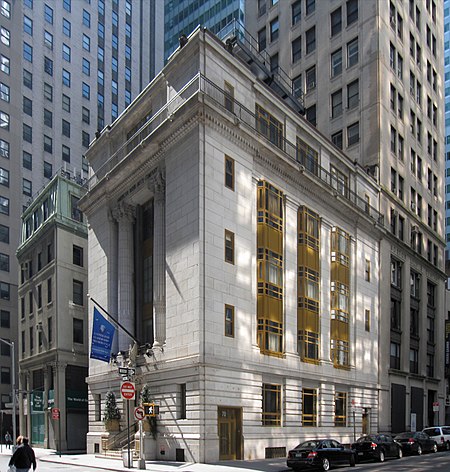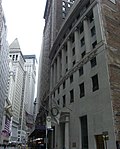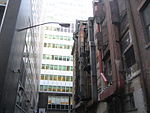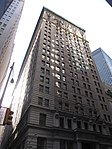American Bank Note Company Building

The American Bank Note Company Building is a five-story building at 70 Broad Street in the Financial District of Manhattan in New York City. The building was designed by architects Kirby, Petit & Green in the neo-classical style, and contains almost 20,000 square feet (1,900 m2) of space, with offices and residences on the upper floors. The exterior consists of a main facade on Broad Street with two columns, as well as side facades with pilasters on Beaver and Marketfield Streets. The building was erected in 1908 as the home of the American Bank Note Company, a leading engraving company that produced banknotes, currency, stamps, and stock certificates. The company had previously occupied several other sites in Lower Manhattan, and had a printing plant in the Bronx. After the company sold the American Bank Note Company Building in 1988, it was sold to numerous owners, and renovated into offices and residences. The American Bank Note Company Building is a New York City designated landmark and listed on the National Register of Historic Places (NRHP). It is also a contributing property to the Wall Street Historic District, a NRHP district created in 2007.
Excerpt from the Wikipedia article American Bank Note Company Building (License: CC BY-SA 3.0, Authors, Images).American Bank Note Company Building
Broad Street, New York Manhattan
Geographical coordinates (GPS) Address Nearby Places Show on map
Geographical coordinates (GPS)
| Latitude | Longitude |
|---|---|
| N 40.7048 ° | E -74.0117 ° |
Address
Broad Street 70
10004 New York, Manhattan
New York, United States
Open on Google Maps









